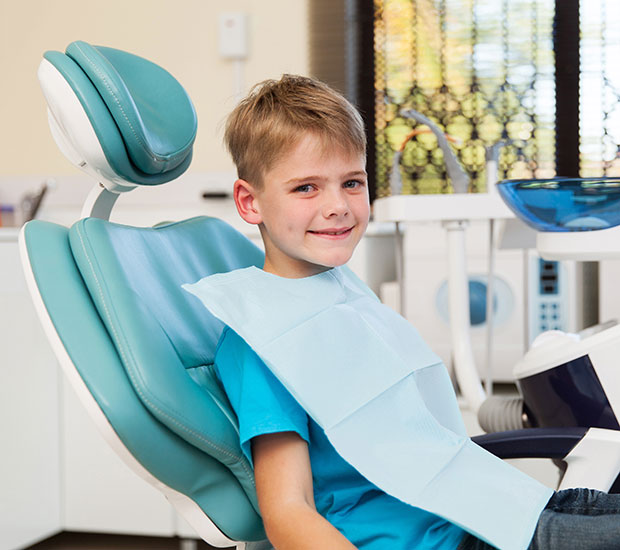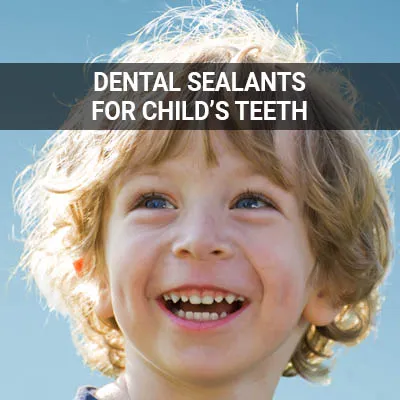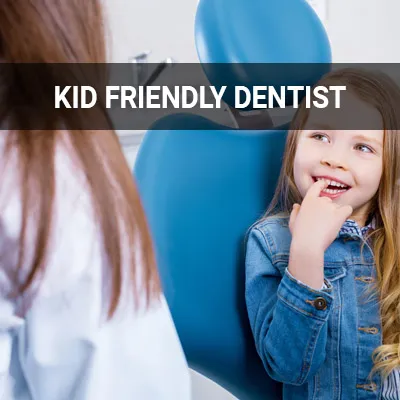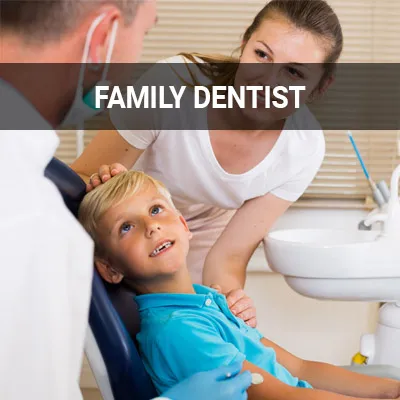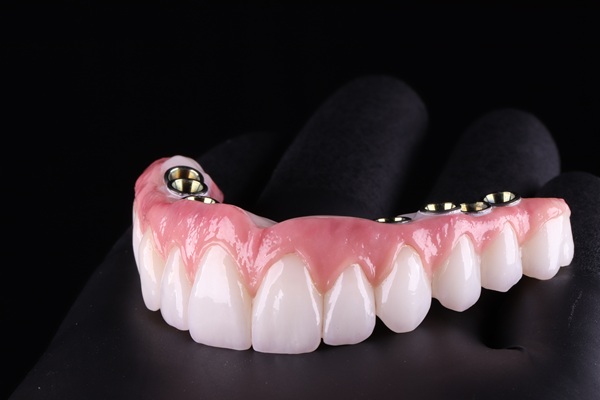Early Orthodontic Treatment Dumont, NJ
During childhood, orthodontic problems can develop without warning. Fortunately, treatment can help restore your child's smile. Early orthodontics straighten crooked teeth, improve the bite, and fix jaw misalignment.
Phase 1 orthodontics is available at Dumont Family Dental in Dumont and the surrounding area. Our team provides care to children of all ages. We help families explore their options for cost-conscious orthodontic treatments. Call us at (201) 374-7202 to learn more.
Early Orthodontic Problems and Their Causes
When children still have their baby teeth, they may show signs of needing early orthodontic interventions to correct certain problems. Children with extra teeth or exceptionally crowded teeth may be candidates for early treatment. Teeth that are excessively spaced out may also be a sign that early orthodontics could be beneficial.
Besides the spacing and positioning of the teeth, early orthodontics may also benefit children with bite problems. An underbite, where the lower teeth jut out further from the upper teeth, and a crossbite, where the jaw appears to shift to the side, may be successfully treated with early orthodontics. Genetics is the most common reason why a young child may have a bite problem, but some of these problems may be linked to thumb-sucking, prolonged pacifier use, or bottle use.
“When children still have their baby teeth, they may show signs of needing early orthodontic interventions to correct certain problems.”
What to Expect from Phase 1 Treatment
The American Academy of Orthodontics states that children should receive an evaluation by age seven. During this evaluation, the dental team may take measurements or make impressions. They also examine the child's bite and check for misalignment. Next, they will develop a treatment plan.
If the child has lost their baby teeth early, the team may recommend a space maintainer. These appliances help prevent crowding. In addition, they can help the child's adult teeth shift into the right position. The team might also suggest a palate expander to widen the child's jaw. Expanders create extra space for adult teeth. Sometimes, expanders also help fix a bite problem.
Phase 1 treatments usually will not involve braces, and dental providers may delay braces until the child has all their adult teeth. But if a child has a significant dental issue, the team may recommend braces right away. In addition, early braces might help shorten the next stage of orthodontic treatment.
“…dental providers may delay braces until the child has all their adult teeth.”
What to Expect After Stage 1 Treatment
Phase 1 orthodontics usually lasts for one to two years, and most patients finish stage 1 treatment by age nine. During phase 1, the child may have regular checkups with their dental team. The team adjusts orthodontic appliances and takes measurements. They make sure the child stays on track. After phase 1 is complete, the child has a rest period. The dental team may remove phase 1 appliances and stop treatment. At this stage, the team can let parents know whether their child needs phase 2 care.
“Phase 1 usually lasts for 1-2 years, and most patients finish stage 1 treatment by age nine.”
Check out what others are saying about our dental services on Yelp: Early Orthodontic Treatment in Dumont, NJ
Transitioning to Phase 2
Phase 2 may begin around age 10-11. During this stage of treatment, the team may recommend braces. Most children can expect to wear their braces for about two years. In some cases, treatment time may be longer or shorter. Keep in mind that each patient has unique dental needs. Some children might need to wear their braces for up to four years. The dental team can provide more information about each child's treatment timeline.
Not all children need phase 2 treatment. Sometimes, early orthodontic treatments can eliminate the need for braces. The dental team tracks each patient's progress during phase 1, and they can help families decide whether to proceed with phase 2.
“Sometimes, early orthodontic treatments can eliminate the need for braces.”
Questions Answered on This Page
Q. What causes early orthodontic problems?
Q. When should phase 2 be postponed?
Q. What kind of treatments are part of phase 1 orthodontics?
Q. How long does Phase 1 last?
Q. What can I expect from phase 2 treatment?
People Also Ask
Q. What makes a kid friendly dentist unique?
When To Postpone Treatment Until Phase 2
While a two-phased approach to orthodontics can benefit many cases, some patients may be fine skipping phase 1. If the child has already lost most of their baby teeth, it may be better to opt for phase 2 treatment only. Additionally, there are some patients with minor problems that may not need extensive phase 1 intervention.
“If the child has already lost most of their baby teeth, it may be better to opt for phase 2 treatment only.”
Frequently Asked Questions About Early Orthodontic Treatment
Q. What is phase 1 orthodontics?
A. Phase 1 orthodontic treatment usually takes place between ages six and nine. During phase 1 care, the dental team looks for developing problems. They check your child's bite and jaw alignment. The team also takes steps to improve the alignment of adult teeth. Phase 1 usually involves retainers, palate expanders, and space maintainers.
Q. Does my child need phase 1 care?
A. All children should receive an orthodontic evaluation by age seven. During the assessment, the dental team performs a full exam. The team can let you know whether your child would benefit from early orthodontics.
Q. How can I find out if my child needs braces?
A. During the initial evaluation, the team may be able to determine whether your child needs braces. But in some cases, the team may delay their recommendations until phase 1 orthodontics is complete. Sometimes, teeth can shift during childhood and change treatment outcomes. Phase 1 treatment may also reduce or eliminate the need for braces.
Q. How long does orthodontic treatment last?
A. Phase 1 orthodontics usually lasts one to two years. If your child needs phase 2 treatment, their orthodontic treatment may continue. Phase 2 treatment might last for about one to three years. The dental team may also suggest breaks during various stages of treatment. Your dental provider can offer a detailed treatment timeline.
Q. How much does orthodontic treatment cost?
A. Treatment costs may vary depending on insurance coverage. Costs also depend on what type of treatment your child needs and how long your child remains in treatment. Our office team can provide more information about early orthodontics costs and coverage.
Dental Terminology
Call Us To Find Out More
To get your child evaluated for possible early orthodontics treatment, call us today at 201-374-7202. Not every child is a candidate for a two-phased treatment, and only an orthodontist can determine the proper course of action. In Dumont we provide complete orthodontic services for all phases of treatment.
Helpful Related Links
- American Dental Association (ADA). Glossary of Dental Clinical Terms. 2024
- American Academy of Cosmetic Dentistry® (AACD). Home Page. 2024
- WebMD. WebMD’s Oral Care Guide. 2024
About our business, and website security
- Dumont Family Dental was established in 1973.
- We accept the following payment methods: American Express, Cash, Check, Discover, MasterCard, and Visa
- We serve patients from the following counties: Bergen County
- We serve patients from the following cities: Dumont, New Milford, Bergenfield, Tenafly, Cresskill, Demarest, Haworth, Hackensack, Englewood, Teaneck, River Edge, and Paramus
- National Provider Identifier Database (1689734162). View NPI Registry Information
- Norton Safe Web. View Details
- Trend Micro Site Safety Center. View Details
Back to top of Early Orthodontic Treatment
